|
Choosing the best organic fertilizer for your garden can be time consuming when comparing different brands and formulations. Not all fertilizers are created equal and not all of them are designed for the same applications. In this blog we will explore some of the different types of organic and natural fertilizers and explain how each of them will benefit your garden. Before we can compare different fertilizers though, we must first discuss the various aspects of fertility and how plants utilize nutrients in the soil.
Why choose organic/natural fertilizer?
To begin, lets take a look at why we choose organic/natural fertilizers versus synthetic or conventional fertilizers:
Understanding the fertilizer label
Understanding the label analysis on the fertilizer packaging is the most important aspect of choosing a product, whether you choose organic or not. The analysis will always include the big three macronutrients: N-P-K. The analysis will always be displayed by percentage, which is percentage of ingredient by weight. For example, if you have a 50lb bag of fertilizer with 4% nitrogen then your total amount of nitrogen in the bag would be 2lbs. 50lbs x .04% = 2lbs
Nitrogen (N): Nitrogen is usually the most limiting nutrient in any soil as it is used by plants for lush green growth and is the nutrient that leaches most easily. Nitrogen is critical for all plants, but is most critical for plants where dark green leafy growth is the main goal: turf, salad greens, onions, cabbage, herbs, etc
Phosphorus (P): Phosphorus is used by plants for healthy root development and flower/fruit development. Having plenty of available phosphorus is beneficial to all plants, but especially those that you want to flower and/or produce fruits. Potassium (K): Potassium is critical to overall plant health as it serves many functions related to the plants ability to deal with stress. Potassium ions help regulate water balance and the opening and closing of the stomata, which are both crucial for drought tolerance and overall plant turgidity. Potassium also plays a key role in nutrient uptake and protein synthesis. Other macronutrients and the importance of soil pH The big three nutrients (N-P-K) are definitely the main components of any plant nutrition regimen, but they only make up a part of the equation - there are several other macronutrients that are essential to plant health as well. Most of these macronutrients are found naturally in healthy garden soil, but sometimes their availability is limited because of soil pH. Adding compost to your soil is the best way to regulate and buffer soil pH. Sulfur: Helps with the development of enzymes, vitamins, amino acids, and chlorophyll. Calcium: Important for cell wall structure and transport of other nutrients Magnesium: Essential for photosynthesis and chlorophyll production Availability of plant nutrients at different pH levels:
As you can see from the chart above, not all of the nutrients in the soil are available in the same capacity at different pH levels. The pH level at which most plants thrive and which most nutrients are available is between 6.0 and 6.5. There are definitely exceptions to this rule so knowing the needs of your plants is essential.
It is highly recommended that you get your soil tested, especially for pH, so you have an idea of what might be lacking in your soil. You can send in soil samples to your local university or extension office if you would like an in-depth analysis of your soil. You can also purchase pH meters if you would like to get a rough idea more quickly. Arbico Organics is a great company that offers many helpful products and resources for healthy soil. They offer a complete soil test for $60, or you can buy pH meters from them as well if you would like to test the pH yourself:
Micronutrients
In addition to the macronutrients, there are several trace elements needed for good plant growth. If your soil has a good balance of organic compost and fertilizers, you will rarely run into deficiencies with these nutrients in your garden, except for maybe iron (which is usually caused by a pH imbalance not an iron deficiency). The micronutrients include: boron (B), chlorine (Cl), copper (Cu), iron (Fe), manganese (Mn), molybdenum (Mo), and zinc (Zn) These trace minerals are more important when starting seedlings or growing plants in containers and can be supplied by using a quality all-purpose fertilizer. Other Essential Components
The nutrient makeup of your fertilizer is definitely important, but the availability of these nutrients increases when used in combination with other organic components such as beneficial fungi, beneficial bacteria, and soil activators.
Beneficial Fungi
Plants form many symbiotic relationships in the soil that are essential to their health and survival. Using natural fertilizers and amendments is not just about being eco-friendly, it is also about providing your plants with a soil environment that is alive and one that they have evolved to thrive in. It is said that mycorrhizal fungi form associations with the roots of approximately 90% of all plant species. Why then have many gardeners not even heard about this important component to plant health? The green "revolution", which started in the 1950's, set in motion a shift in the way the majority of farmers approached plant production. Farming has since become more about stripping the land of all life using pesticides, fungicides, and herbicides, in order to plant into a sterile environment. Once the crops are planted into the sterile environment they are fed with synthetic fertilizer salts, which produces an end result very quickly. Whether this is morally or ecologically responsible is a debate for another day, but the fact of the matter is that this is not a natural environment for plant growth. Here at Hildaberry Farm we believe in a natural approach because we believe it produces more nutrient dense food while also contributing to the long-term health of the soil and all of the organisms that live in the soil. So what exactly are mycorrhizal fungi? Mycorrhizal fungi are a group of soil fungi that form symbiotic relationships with the roots of plants. In this relationship the plant will provide the fungus with sugars from photosynthesis, in return the fungus will supply the plant with water and nutrients through the mycelium. The mycelium is like the root system of the fungus, but it is much smaller than a plant root so it can extend further into the soil and capture more water and nutrients because of the larger surface area. There are two types of mycorrhizal associations: endo and ecto. Most plants form an endomycorrhizal association at the roots. This is where the fungus will actually penetrate the root of the plant and attach to the root cells within the root. An ectomycorrhizal association is where the fungus will attach by forming a sheath over the outside of the plant root tip. Ectomycorrhizal association occurs in woody plants species, like plants in the rose family, which is incredibly important if you are starting an orchard. You can purchase mycorrhizal fungi to apply to your plants at the time of transplant in order to ensure a good colonization on your plant roots. I highly recommend Wildroot Organics products. I have known David and Teresa Steinbrunner for several years and they are wonderful people to work with. They offer mycorrhizae powder that you can mix with water and apply to the roots of your plants. Click the logo below if you are interested in their product. They are a husband and wife team so you will be supporting a small family run business!
Beneficial Bacteria
There has been a lot of research focused on beneficial bacteria in recent years. It has been suggested that beneficial bacteria in the gut of humans plays a major role in mental health and mood. You have probably heard a lot about probiotics lately, including Greek yogurt, fermented vegetables, kombucha, and more. Just as beneficial bacteria are good for the gut of humans, they also play an important role in the health of the soil. Yes, your soil needs probiotics too! Bacteria work in the soil to break down organic compounds and make the nutrients in the rhizosphere (area around the roots in the soil) more available for plant root uptake. A soil that is rich in beneficial bacteria will feed your plants continuously through the action of releasing locked nutrients. There are also a group of bacteria which form a symbiotic relationship with plant roots in the form of nitrogen-fixing nodules. As we pointed out earlier in this blog post, nitrogen is the most limited nutrient in the soil and is important for healthy green growth of plants. Most of the nitrogen available on earth is in the form of nitrogen gas in the air. Nitrogen-fixing bacteria convert the nitrogen in the air into a form of nitrogen that plants can use, and in return the bacteria feed off of the plant sugars in the roots from photosynthesis. It is important to understand that one group of plants, legumes, are especially well-adapted to form this symbiotic relationship. If you are planting beans, peas, lentils, soybeans, or any other legume, you will benefit from inoculating your seed with nitrogen-fixing bacteria to increase your yields. You can buy nitrogen-fixing bacteria inoculate at one of my favorite places to shop for supplies, Arbico Organics:
Increasing the amount of beneficial bacteria in your soil is as easy as adding well-aged compost. Compost is one of the most important soil amendments for natural/organic gardening. You can also purchase fertilizers and soil additives with beneficial bacteria colonies added to them. There are products which are designed to increase microbial activity in your soil and compost pile and you can purchase high quality ones at Arbico Organics:
Humates
Humates are naturally found in any soil that is high in organic matter. Humates are formed through the decomposition of organic matter and are made up of humic and fulvic acid, which both play a role in healthy plant growth. Humates improve soil structure, feed beneficial soil microbes, reduce enviromental stress on your plants, and make nutrients more bioavailable so your plants can utilize them. Adding compost and worm castings to your soil will naturally improve the humate content over time. You can also use products that contain high quality humates to get quick results if your soil is lacking organic matter in the present:
Kelp/Seaweed
Kelp and seaweed contain over 70 proteins, vitamins, enzymes, and minerals, making them excellent candidates for boosting the overall health of your plants. Kelp and seaweed alone won't provide all of the nutrition your plants need for sustained growth, but using them will help to establish healthy roots and provide your plants with the durability to withstand environmental stress. We use liquid seaweed to feed our seedlings in-between feeding them with their all-purpose fertilizer. It is especially beneficial to use these products when transplanting seedlings to help lessen transplant shock. Our recommended sources of kelp and seaweed include:
Choosing an organic fertilizer
Now that we have discussed the fundamentals that make up quality plant nutrition it's time to use this information to select a good quality fertilizer for your plants. As a general rule of thumb you will want to use a good all-purpose fertilizer that contains all or most of the components discussed above. The exception to the rule would be if you are trying to provide a more focused nutrient regime for a specific need of a certain plant.
Here is a list of our favorite fertilizers along with information about why/how we use each of them: Granular Fertilizers Granular fertilizers come in granular form (as the name implies) and will provide your plants with a slow release of nutrients throughout the growing cycle. These fertilizers can be incorporated into the soil at the time of planting, top dressed around your plants after planting, or mixed in with your potting soil for container grown plants. #1 Microlife Multi-Purpose (6-2-4)
#2 Microlife Acidifier (6-2-4)
#3 Down to Earth Bio-Live (5-4-2)
#4 EcoMax Neem Kernel Vegan Fertilizer (6-2-1)
Liquid Fertilizers
Liquid fertilizers are ideal for giving your plants a quick boost of nutrients when they need it. Using a fertilizer in liquid form is perfect for watering plants in 6-packs or containers, or when watering plants in the field that need a mid-season boost.
#1 Microlife Ocean Harvest (4-2-3)
#2 Down to Earth Liquid All Purpose (4-1-3)
Conclusion
We hope you learned something new and valuable from this blog post so you can make informed decisions when purchasing a good quality fertilizer for your garden. This information is just the tip of the iceberg, so if you have specific questions about your situation please feel free to email us and we would be happy to help you out if we can. If you would like to locate products locally you can usually find these brands, or brands with comparable ingredients, at your local feed stores or nurseries. If purchasing online is your only option we highly recommend Arbico Organics for all of your natural fertilizer needs. Feeding your soil and your plants is not as simple as buying a bag of Miracle Grow. You will be eating the fruits and vegetables from your garden so feeding them what they need to grow as healthy as possible will benefit you in the end. Healthy soils feed healthy plants. Healthy plants feed healthy people. Healthy people are happy people! Happy gardening.
Authored by Corey Wahl
8 Comments
|
AuthorsHildaberry Permaculture blog is authored by owners Corey Wahl and Susie Stopa. We are located in Oregon and are proud to share our experiences as we build our small permaculture and regenerative agriculture farm. ArchivesCategories |
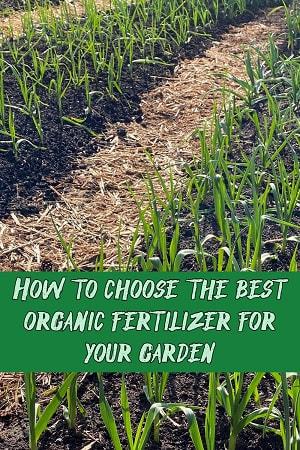





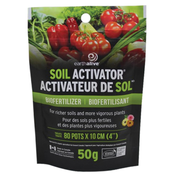





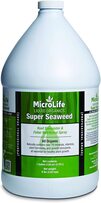
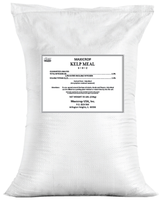

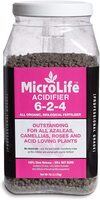





 RSS Feed
RSS Feed